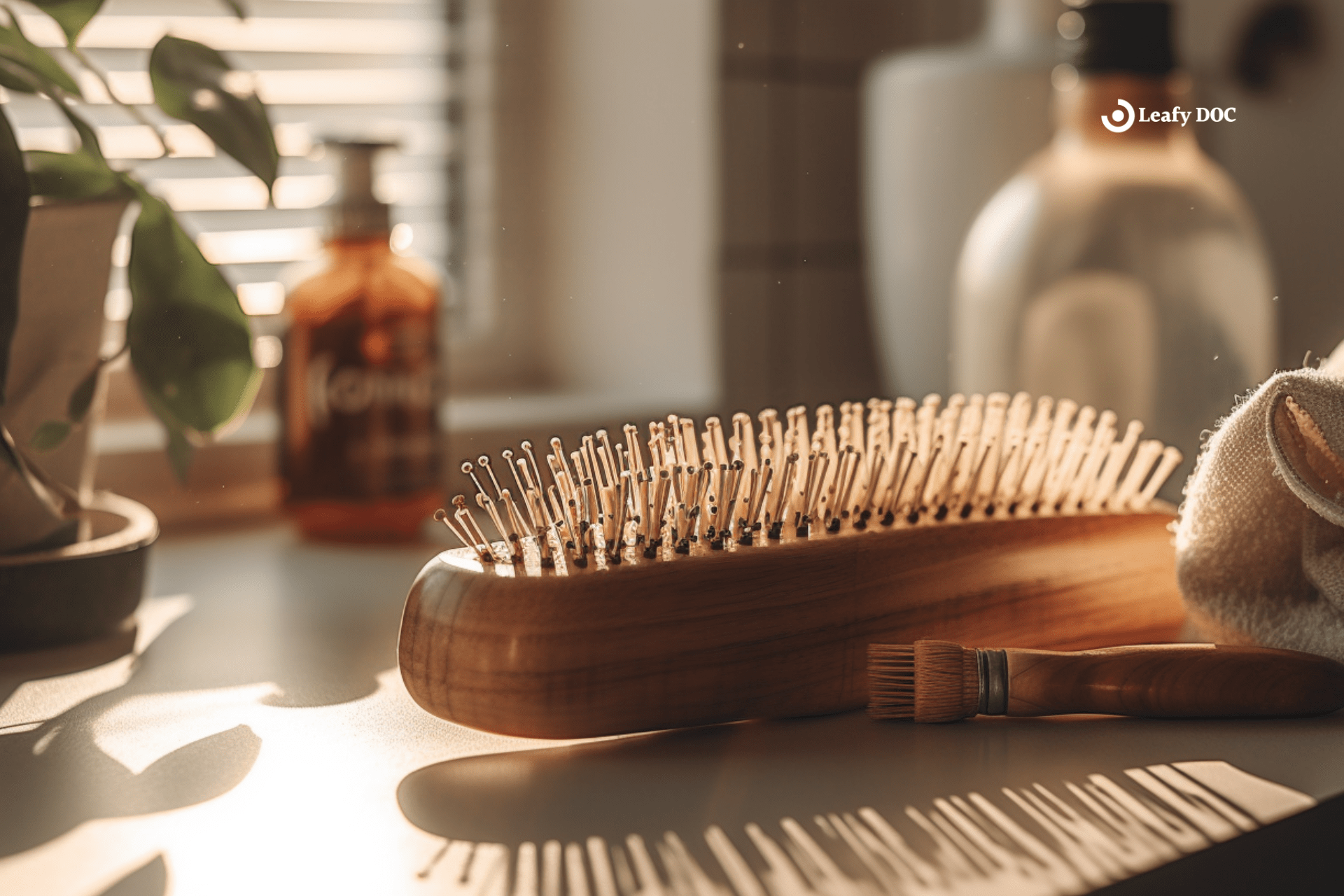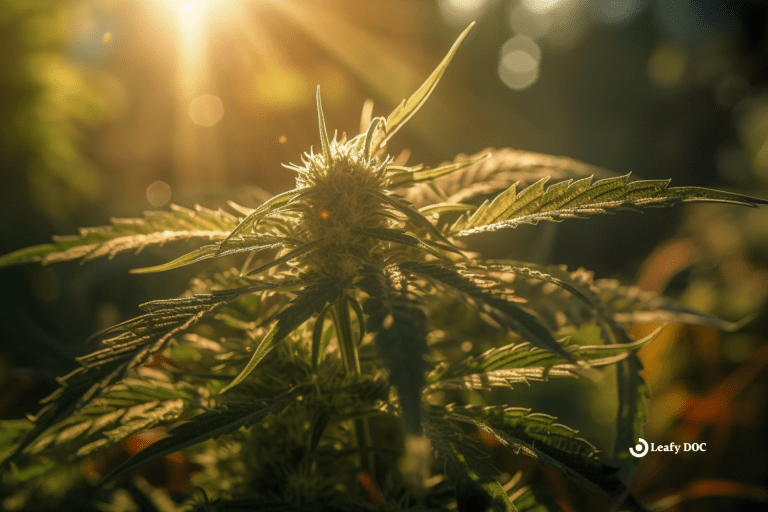How Long Does THC Remain In Hair Follicles?
by Haley Mills · October 27, 2023
Curious about THC and hair follicle testing? Find out how long THC stays in hair follicles and get the truth about drug testing. Click now for all the answers you need!

Hair drug testing has become an increasingly popular method for detecting drug use, particularly in cases where other forms of testing may not be as accurate or effective.
One of the most commonly tested substances is tetrahydrocannabinol (THC), the psychoactive compound found in marijuana. Understanding how long THC remains in hair follicles is crucial for determining the extent and duration of drug use.
This article aims to provide a comprehensive overview of the science behind hair drug testing, the detection window for THC in hair, factors affecting THC retention in hair, methods for removing THC from hair, and the implications of hair follicle testing for drug use.
The Science Behind Hair Drug Testing
Did you know that hair drug testing is based on the science of how drugs and their metabolites are deposited into hair follicles?
Hair follicle drug testing accuracy is based on the fact that when drugs are ingested or metabolized in the body, they can be deposited into the hair follicles through the bloodstream. This is because the blood vessels in the scalp nourish the hair follicles, and any substances in the bloodstream can be incorporated into the growing hair strands.
Compared to other drug testing methods, hair follicle testing is highly accurate. This is because drugs and their metabolites can remain in the hair follicles for a longer period of time compared to urine or saliva, which are typically used for other drug tests.
While urine and saliva tests can only detect recent drug use, hair follicle testing can detect drug use that occurred up to 90 days prior to the test. This makes hair follicle testing a valuable tool for detecting long-term drug use and providing a more comprehensive picture of an individual’s drug history. Hair follicle testing has been found to have a lower rate of false positives compared to other drug testing methods, further increasing its accuracy and reliability.
Detection Window for THC in Hair
Hair follicle testing is known for its accuracy in detecting drug use, including THC. THC can be detected in hair follicles for a longer period of time compared to other drug testing methods, such as urine or blood tests.
THC metabolites bind to the hair shaft and remain there even as the hair grows. The accuracy of hair follicle testing for THC is often debated due to various factors that can affect the results. One of the main concerns is the potential for external contamination, where THC from environmental sources, such as secondhand smoke or contact with THC-infused products, can be transferred to the hair and falsely indicate drug use.
However, hair follicle testing has improved over time to minimize the impact of external contamination through rigorous washing and testing procedures. Legal considerations also play a role in hair follicle testing for THC.
Different jurisdictions may have different cutoff levels for determining a positive result, and it’s crucial to adhere to these guidelines when interpreting the results. Additionally, legal challenges may arise regarding the accuracy and reliability of hair follicle testing for THC, and these considerations should be considered when using this method for drug testing purposes.
Factors Affecting THC Retention in Hair
Factors such as frequency of use, metabolism, and individual hair characteristics significantly impact THC retention in hair follicles. THC is stored in the hair shaft, and the longer the hair, the longer the detection window for THC.
Hair care practices also play a role in THC retention. For example, using hair products that contain THC or its metabolites can lead to higher levels of THC in the hair. Additionally, environmental exposure to THC can also affect its retention in hair. Suppose an individual is exposed to high levels of THC in their environment, such as in a smoky room or while handling marijuana. In that case, it can result in higher THC levels being incorporated into the hair shaft.
These factors contribute to the variability in THC retention in hair and the detection window for THC in hair follicles. Individuals who use marijuana frequently are more likely to have higher levels of THC in their hair than occasional users. With repeated use, THC can accumulate in the hair over time. Metabolism also plays a role in THC retention. Some individuals may metabolize THC more slowly, resulting in higher THC levels retained in their hair follicles. On the other hand, individuals with faster metabolism may eliminate THC from their hair more quickly.
Individual hair characteristics, such as porosity and thickness, can also affect THC retention. Porous hair may absorb more THC, while thicker hair may have a longer detection window due to the larger surface area for THC to bind to.
Methods for Removing THC from Hair
One effective way to remove THC from hair is through various methods. Natural detoxification methods can help remove THC from the hair follicles. These methods often involve using natural ingredients, such as apple cider vinegar, baking soda, and lemon juice, to cleanse the hair and remove any traces of THC.
Another option for removing THC from hair is using hair cleansing products. These products are specifically designed to remove toxins from the hair follicles, including THC. They often contain special ingredients, such as activated charcoal or detoxifying shampoos, that help to break down and remove any THC that may be present in the hair.
Implications of Hair Follicle Testing for Drug Use
Hair follicle testing for drug use can significantly affect a person’s future opportunities and reputation. The legal and ethical concerns surrounding hair follicle drug testing stem from the potential for false positives and the invasion of privacy. While hair follicle testing is generally considered to be accurate and reliable, there have been cases where individuals have tested positive for drugs they didn’t use. This can have serious consequences for individuals, such as loss of employment or damage to their personal and professional reputation.
The accuracy and reliability of hair follicle testing compared to other drug tests is a topic of debate. Hair follicle testing can detect drug use over a longer period of time compared to urine or saliva testing. This is because drugs can be detected in hair follicles for up to 90 days after use, while urine and saliva tests typically have a shorter detection window. However, there are concerns about the potential for external contamination of hair samples, which could lead to false positives.
Hair follicle testing is more invasive compared to other tests, as it requires a hair sample to be collected from the individual. This raises questions about violating personal privacy and potential discrimination based on hair type or style. Overall, while hair follicle testing can provide valuable information about a person’s drug use, it is crucial to consider this testing method’s legal and ethical implications.
Frequently Asked Questions
Are there any home remedies or products available to remove THC from hair follicles?
No scientific evidence supports the effectiveness of natural remedies or detoxification methods in removing THC from hair follicles. The only surefire way to remove THC from hair is to wait for it to grow out.
Can hair products or treatments impact the accuracy of hair follicle drug testing?
Hair follicle detoxification techniques and hair treatments have the potential to impact the accuracy of hair follicle drug testing. These factors can alter the composition of the hair, potentially affecting the detection of THC and other drugs.
Is it possible for secondhand marijuana smoke to result in a positive hair follicle drug test?
Secondhand marijuana smoke exposure poses minimal risks for a positive hair follicle drug test. While minute amounts of THC may be present, it is unlikely to exceed the threshold for detection. Legal implications of secondhand exposure vary by jurisdiction.
Can hair dye or bleaching affect the detection of THC in hair follicle testing?
Hair dye and bleaching can potentially affect the detection of THC in hair follicle testing. While there is limited research on this topic, these processes may alter the effectiveness of THC detection.
How accurate and reliable is hair follicle testing for detecting THC use compared to other drug testing methods?
Hair follicle testing is considered more accurate and reliable than urine testing for detecting long term THC use. It provides a longer detection window, up to 90 days, compared to urine testing which typically detects THC use within the past few days.
Last Updated: August 8, 2024
Get Approved for Your Medical Marijuana Card in Minutes!

Get Your Medical Card
Connect with a licensed physician online in minutes

Like This Article?
Share with your friends
Table of Contents
Keep Reading
-
How Do I Get a Medical Marijuanas Card in MA?
Looking to get a medical marijuana card in MA? Here’s everything you need to know, from qualifying conditions to the application process.
-
Why Does Cannabis Have A Skunky Odor?
Uncover the fascinating science behind cannabis’ skunky aroma! Find out why weed smells like a skunk and satisfy your curiosity. Click here to unlock the secret now!
-
Is Cannabis Considered A Depressant?
Find out the truth about cannabis as a depressant and its impact on your mental health. Click now to uncover the surprising facts and gain valuable insights!



